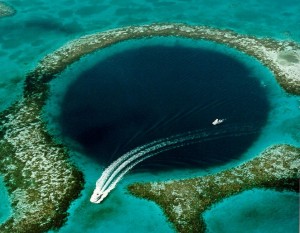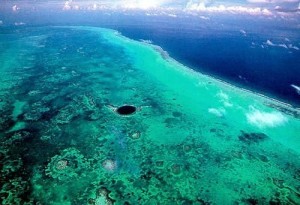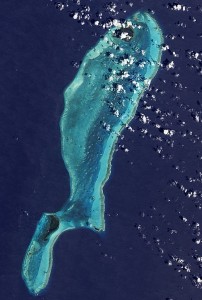Senior Divers Find a “Stunning Jewel”
Senior travelers, ever heard of the Great Blue Hole? I discovered that it ranked #31 among the Top World Attractions. One of the world’s greatest hidden wonders, it lies near the center of Lighthouse Reef, a small atoll 60 miles from the mainland of Belize.
The hole is circular in shape, over 1000 feet across and 400 feet deep. It formed as a limestone cave system during the last ice age when sea levels were lower, and the caves flooded as the planet warmed and sea levels rose.
A feature attraction of diving in Belize, especially for senior divers with an appreciation of geographical phenomena, is the opportunity to explore the famed Blue Hole. It is one of the most astounding dive sites to be found anywhere on earth. They say that it is like a giant pupil in a sea of turquoise.
Geologists say that The Great Blue Hole is essentially a collapsed underwater limestone cavern, where you can find the surreal combination of stalactites and sharks. Yup, the sharks enjoy the Hole too.
Most experienced divers count this as part of their “to-dive” list. Many will attest that the effort and the expense are well worth it. Dive excursions to the Great Blue Hole are full-day trips, that usually consist of one dive in the Blue Hole and two additional dives in nearby reefs. Reef divers drool over the Belize Barrier Reef and the Blue Hole that teems with angelfish, elkhorn coral, cleaner shrimp and stalactites.
Seniors Awed By the Blue Hole
Believed to be the world’s largest feature of its kind, the Hole is part of the larger Belize Barrier Reef Reserve System and a World Heritage Site. Divers discover that the hole itself is the opening to a system of caves and passageways that penetrate this undersea mountain. For those of us seniors who enjoy snorkeling, Blackbird Caye & Lighthouse Reef await us as well.
It is to the world-renowned diver, Jacques Cousteau, that Belize owes much of its fame. His expeditions to the Blue Hole has brought it to the attention of the world when he said that it is one of the top ten scuba diving sites in the world. Jacques Cousteau took the Calypso and his one-man submarines into the hole in 1972 to examine stalactites suspended from overhanging walls. He described Belize as “one of the four must-dive locations on this blue planet”.
The analysis of stalactites found in Great Blue Hole shows that formation has taken place 153,000, 66,000, 60,000, and 15,000 years ago. How did they ascertain those facts? I just don’t know.
Nearby Half Moon Caye Natural Monument, a bird sanctuary whose dense vegetation provides habitat for thousands of red-footed boobies and frigate birds, is a senior naturalist’s dream. So pack up that gear and make plans for a great dive into the Great Blue Hole. jeb



